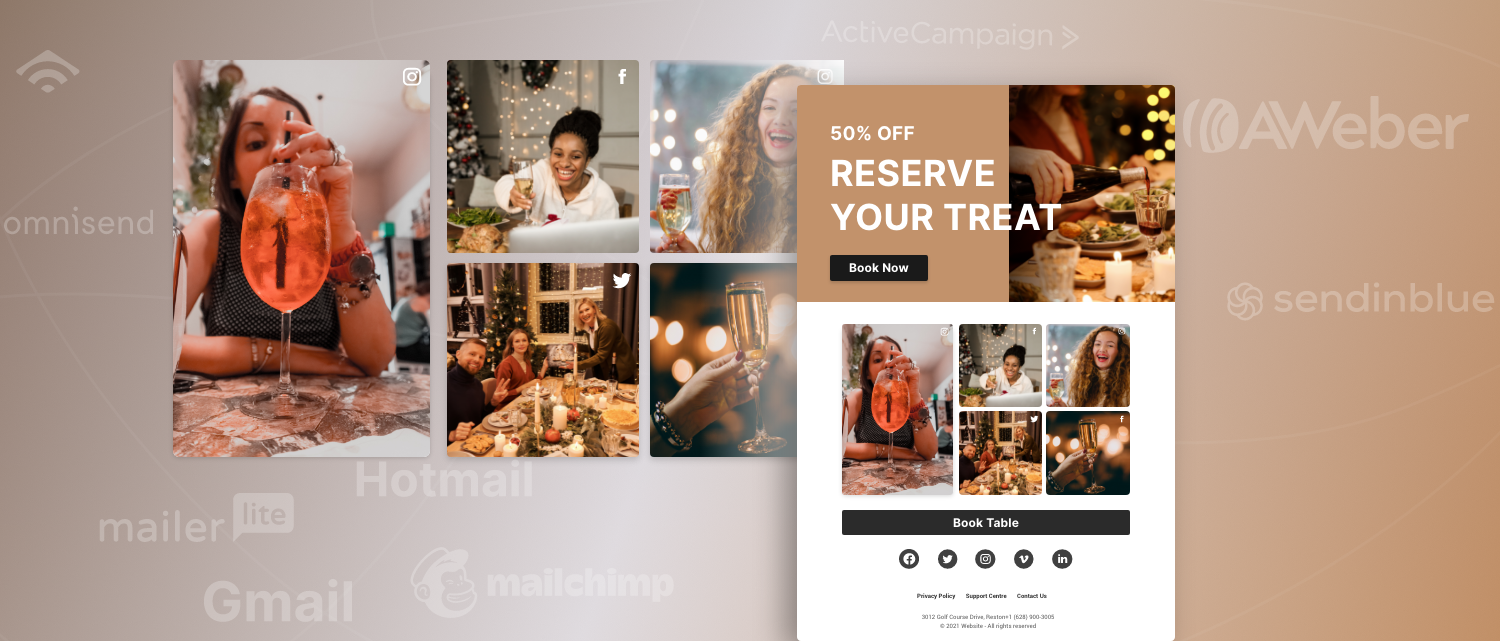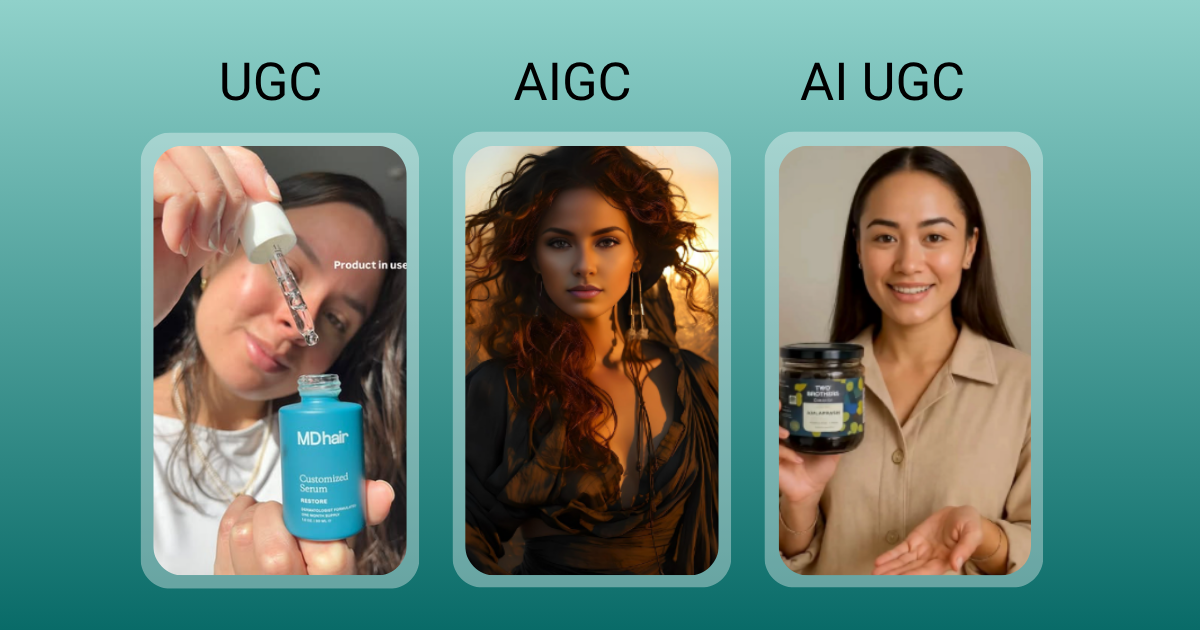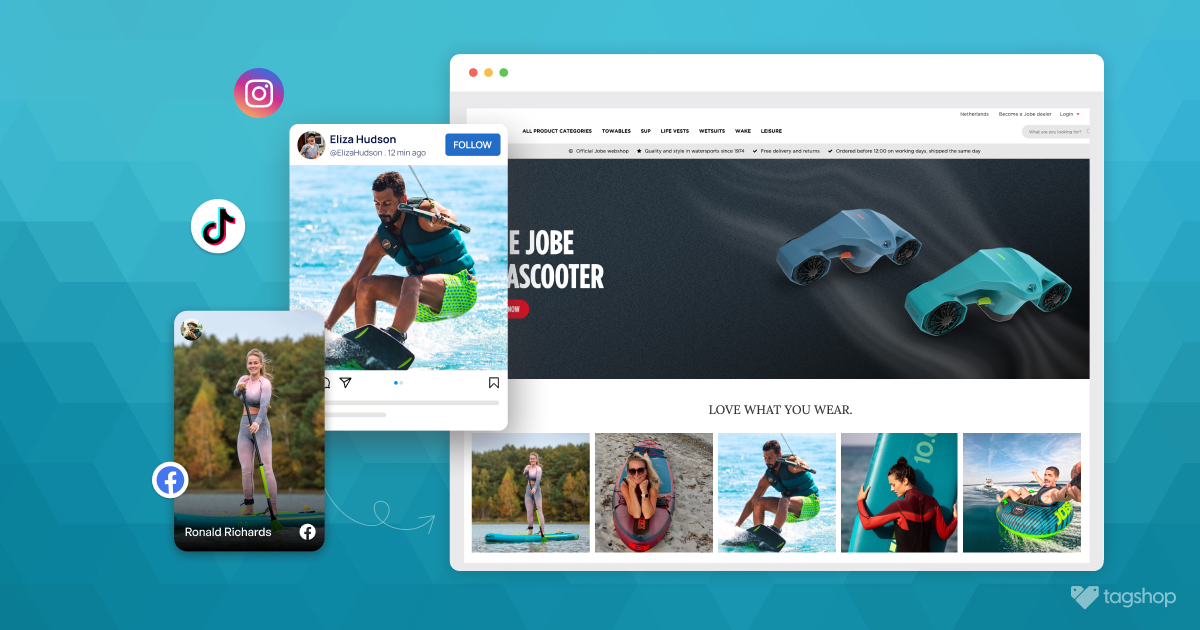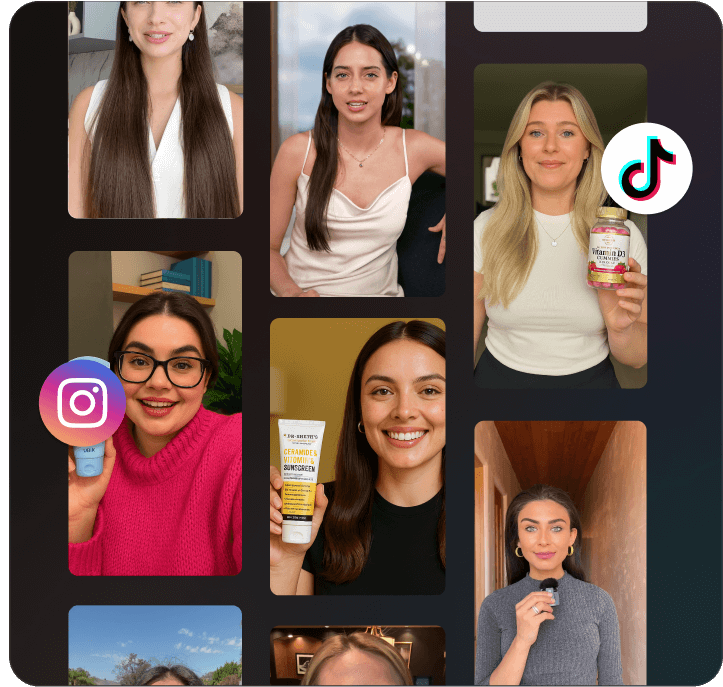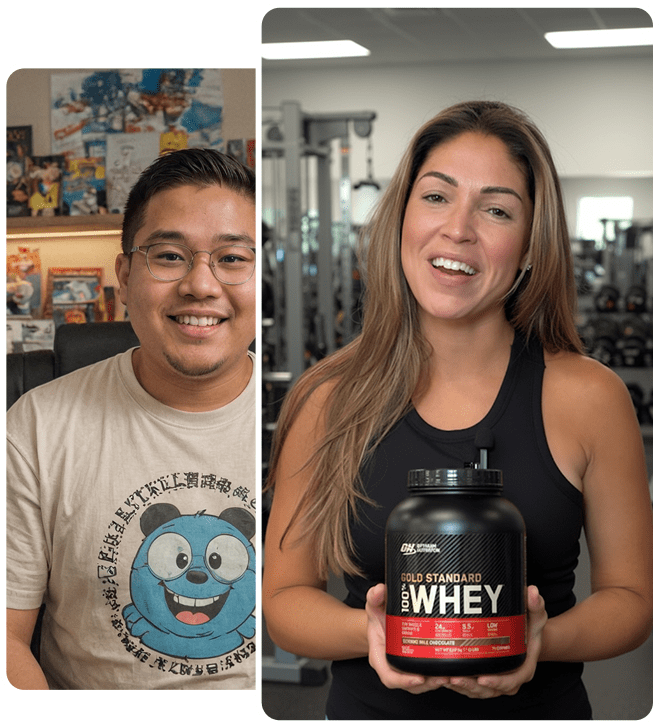10 UGC Email ExamplesTo Boost Your Marketing Campaigns
Capturing and maintaining customer attention is more challenging than ever in the competitive world of eCommerce. Ecommerce businesses often struggle to create genuine connections with their audience with a constant influx of products and promotions. A straightforward solution for eCommerce brands is adding UGC email examples to their marketing campaigns.
By displaying authentic customer experiences, these emails build trust and create a sense of community— two essential ingredients for boosting conversations. The struggle with low engagement rates, the difficulty in showing social proof, and the challenge of standing out are all too familiar for eCommerce brands.
Crafting compelling emails that genuinely resonate with consumers is complex and time-consuming. However, UGC for eCommerce email templates offers a solution, streamlining this process and allowing brands to effortlessly include authentic testimonials, visual reviews, and images from satisfied customers. This approach works across industries, whether you’re in retail, lifestyle, or even service sectors like WritePaper, where credibility and authentic feedback play a major role in building trust.
Read this blog for ten inspiring UGC email examples to elevate your outreach and enhance your sales strategy.
Before checking out UGC Email Examples, let’s have a look at How you can include UGC in Your Email Campaign:
Types of UGC to be Part of Your Email Campaign:
User-generated content (UGC) can significantly enhance your email campaigns and foster stronger connections with your audience. Here are some effective types of UGC to incorporate:
1. Customer Reviews and Testimonials:
- Direct Quotes: Highlight positive feedback from satisfied customers.
- Star Ratings: Include star ratings to represent customer satisfaction visually.
- Case Studies: Share in-depth stories of how customers have benefited from your product or service.
2. Social Media Posts:
- Photos and Videos: Showcase visually appealing content shared by your followers.
- Comments and Replies: Highlight engaging discussions related to your brand.
- Reposts or Shares: Feature content that has been widely shared or reposted.
3. User-Submitted Photos or Videos:
- Product Demonstrations: Show customers using your products in creative ways.
- Unboxing Experiences: Share videos of customers opening and unboxing your products.
- Behind-the-Scenes Glimpses: Provide exclusive content from your customers.
4. Blog Comments or Forum Discussions:
- Questions and Answers: Highlight informative responses to customer inquiries.
- Customer Insights: Share valuable feedback and suggestions from your community.
- Community Engagement: Showcase discussions and interactions among your customers.
5. User-Generated Content Contests:
- Encourage Submissions: Run contests or challenges to encourage customers to create original content.
- Feature Winners: Highlight the winning submissions in your email campaigns.
6. Customer-Created Tutorials or Guides:
- How-To Content: Share educational content created by your customers.
- Expert Advice: Leverage the knowledge and expertise of your community.
By incorporating a variety of UGC into your email campaigns, you can create more engaging and authentic experiences for your audience. To make the most of these strategies, consider partnering with an experienced email marketing agency to optimize your campaigns and maximize engagement.
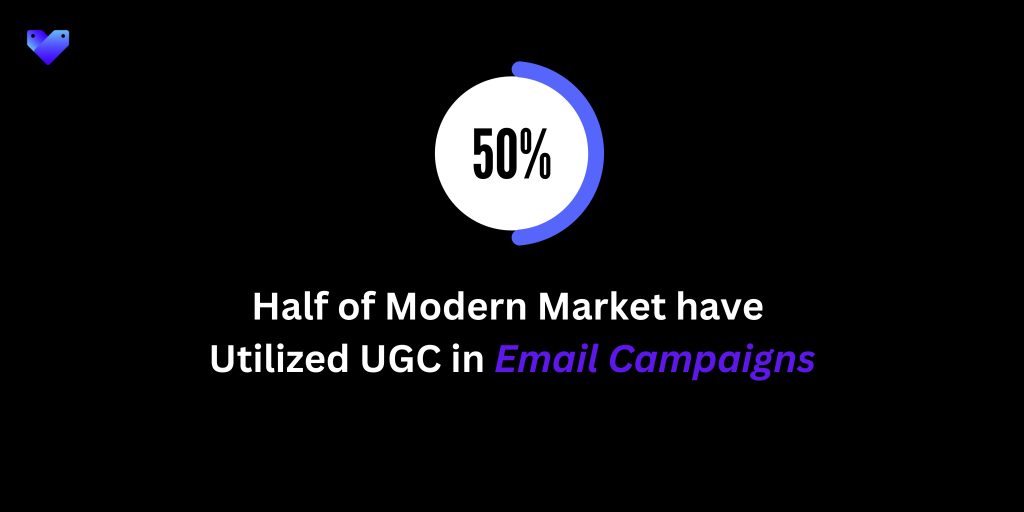
10 User-Generated Email Examples To Build trust
Check out 10 of the best UGC email examples you can include in your marketing strategy for better results and conversions.
1. Testimonial Tuesday
A testimonial email or Tuesday testimonial mail series is one of the best eCommerce marketing tools to introduce your brand and leave a positive impression. And as the saying goes, “You don’t get a second chance to make the first impression.”
According to Bigcommerce, over 58% of shoppers interacting with testimonials are more likely to convert and have a 3% higher AOV. Given the apparent value of testimonials, it’s in your interest to actively seek them out rather than waiting for some magic to happen. After generating testimonials, you need your existing and potential customers to see them, and here comes the Testimonial Tuesday email marketing campaign.
Bite, a dental care brand, wins over potential customers in this testimonial email.
Why This Works-
- Testimonials showcased focus on different pain points of potential customers.
- Played smartly with the “$5 off” promotion at the bottom of the email.
2. User-Generated Content Showcase
In this email, you motivate subscribers to make buying decisions by showing UGC videos or photos of your products being used innovatively and creatively. By featuring these user-generated visuals in your email campaigns, you display the versatility of your offerings and show the genuine satisfaction of your customers, especially when powered by a robust email api to ensure fast, consistent delivery. This will build trust and foster a sense of community.
Black Milk Clothing, a fast-fashion brand, displays its products and shoppers in marketing emails. For customers who appear in their email lookbook, they even offer up to $50 vouchers.
Why This Works-
- This campaign works because it motivates customers to create UGC and keeps followers hooked on the brand’s emails.
- This campaign encourages followers to interact with Instagram, Facebook, and email accordingly.
3. Behind-the-Scenes With Our Customers
One of the best things customers love to see is the actual process of product sampling. Giving them that inside look lets them trust your brand by providing insights into your process. This can be an excellent way to showcase high-quality premium products and the detail that goes into making them.
Satchel & Page, a premium leather handbag eCommerce brand, showcases the behind-the-scenes of product making with customers through UGC email examples.
Why This Works-
- Customers are impressed by the products and details shared by the brand.
- They shared customer stories of using the brand’s product through email examples.
4. Customer Q & A
Using customer Q&A in UGC email examples campaigns can significantly boost trust and engagement. Inserting customer queries and their answers helps humanize the brand that wins their hearts.
When potential customers see inquiries from friends and responses that reflect genuine experiences, it builds authenticity and relatability.
This approach taps into the power of UGC, showing real people have found value in your product and are willing to share insights. This will work as an eCommerce marketing guide for your brand.
Glossier’s email marketing campaigns often include a ‘Customer Q&A’ segment where they display real customer questions alongside other user instances. For example, a question about the best product for dry skin might be answered by several customers sharing their personal favorites and tips.
Why This Works-
- Customers trust other customers more than brand messaging, developing a sense of transparency by showing real questions and answers.
- Highlighting customer experiences provides social proof, motivating other customers to purchase based on positive experiences.
5. UGC Contest Announcement
Offer incentives to motivate subscribers to contribute to UGC. The best way to do this is to announce contests in UGC ads through email marketing campaigns. An email campaign can spread the word about your contest announcement, especially with catchy subject lines. This contest will keep your customers engaged, offering a delightful experience and making it easy for them to buy it from you.
Doe, an eyelash brand, elevated UGC email examples by incentivizing customers to create and showcase UGC on their social media channels.
Why This Works-
- Provides an offer to get paid by the brand after creating and posting UGC using the brand’s product.
- They are giving customers a chance to become influencers for the brand.
6. Customer-curated Newsletter
For your audience, featuring tips, products, or recommendations directly from your customers in a newsletter can create a dynamic and engaging experience. This approach highlights the community aspect of your brand and leverages the power of user-generated content (UGC) to drive interest and sales.
Stitch Fix is an excellent example of a brand using customer-curated email newsletters. This brand often features “Stylist Picks” or “Customer Favorites” sections, showing products real customers select and what they love about them.
Why This Works-
- Displaying contributions from your customers develops a sense of belonging and motivates more interaction with your brand.
- Curated content brings multiple voices and experiences into your newsletter, appealing to a broader audience and catering to different preferences.
7. Personalize Recommendations
Most UGC email examples leverage customer testimonials or reviews to promote a range of products. Using UGC email examples to increase eCommerce sales for personalization goes beyond just sending customers better product recommendations. As per the study by McKinsey & Company, over 71% of consumers expect their experience to be personalized.
With product recommendations, personalized emails based on past purchase history or browser history can be sent using the data. Special promotions or discounts that reflect the customer’s purchase history or product preferences can also be offered.
Aeva Beauty took a slightly different road by spotlighting one product.
Why This Works-
- Providing star treatment to the product by opening with a high-quality product image.
- It was punctuated by an emoji sparkle- a call-to-action (CTA) placed immediately after the hero image.
- Social media handles, customer photos, and short yet compelling quotes drive home authenticity.
8. Customer Feedback
To get customers ‘ attention, be memorable during social shopping spikes, especially on Black Friday/Cyber Monday and the winter holiday season. Highlight positive customer feedback, whether a review or a photo and utilize it in the UGC email examples. It was sprinkling in customer feedback checks that box.
A drinks brand, Bartesian, spins an unexpected tie-in to Halloween; it shows how brands can creatively pair UGC with any holiday-related email.
Why This Works-
- The hero image and headline generate curiosity among customers, and the intro goes all in on Halloween.
- A strong CTA for both product recommendations.
9. Customer-created Tutorials
Sharing tutorials or how-to guides created by your customers in your email campaigns can enhance the value of your content and deepen customer engagement. This approach shows your products in action and empowers customers by giving them a platform to share their expertise.
Go Pro, a camera brand, effectively utilizes customer-created tutorials as UGC visuals in email campaigns. Showcasing unique ways to capture moments using GoPro cameras, they often highlight videos or guides their users make. According to G2’s report on AI in Customer Engagement, vendors report that predictive segmentation and automated messaging are helping launch campaigns up to 50% faster, contributing significantly to boosting engagement and reducing churn.
Why This Works-
- Customer-created tutorials demonstrate how a product can be used effectively in everyday life, encouraging others to try them.
- Tutorials from real users resonate more than traditional marketing.
10. Community Spotlight
Highlighting a customer or a group of customers who are particularly active or engaged with your brand in an email campaign creates a sense of community. This approach recognizes and celebrates loyal customers and motivates others to engage more deeply with your brand.
Nike, an active sportswear brand, effectively utilizes the community spotlight in its email campaigns. These spotlights celebrate individuals and encourage recipients to engage with the brand and share their stories.
Why This Works-
- Sharing stories of engaged customers can inspire others to connect with your brand, share their experiences, and become part of the community.
- When you feature customers in the spotlight, you show appreciation and make them feel valued, which develops brand loyalty.
How To Collect UGC For Your Email Campaign?
According to TINT’s research, over 50% of marketers use UGC in email marketing. Marketers or brands can source UGC using different methods. Here are some steps for collecting UGC email examples.
1. Monitoring Social Media Mentions and Hashtags
UGC resides on all social media platforms, including Instagram, TikTok, YouTube, and Facebook. Brand mentions and hashtags can be manually searched, but built-in AI tools are better options; many platforms have monitoring mechanisms. Third-party social commerce monitoring tools make the job easier by scanning multiple UGC platforms and providing a more profound analysis, something PaperWriter also noted when exploring content trends in digital marketing.
2. Motivating Customers To Leave Reviews And Share Experiences
As part of the post-purchase experience, automate product review requests. UGC doesn’t always manifest through organic means; sometimes, you must encourage its development. There are some elements you need to motivate customers like:
- A discount incentive
- Explain why customer reviews matter
- An example of motivation
- Several CTAs, which lead to review forms
3. Running UGC Campaigns And Contests
UGC giveaways and contests provide a stock of customer content and are great for engaging the audience and spreading brand awareness. Invite customers to submit original photos or videos about your brand to win the prize.
Final Note!
UGC has emerged as a powerful tool for brand owners looking to inject authenticity, creativity, and engagement. Customers are talking about your brand, paying attention to products, and complementing it. Some people actively search for customer reviews and experiences, while others can’t find them at all. To control the narrative more, bring forward the positive voices. Read the above ten UGC email examples while keeping your brand in mind.

